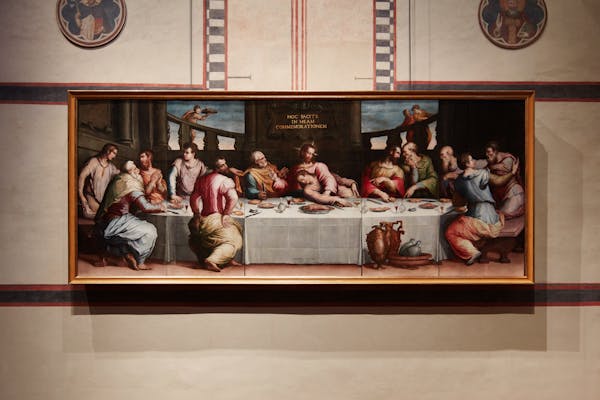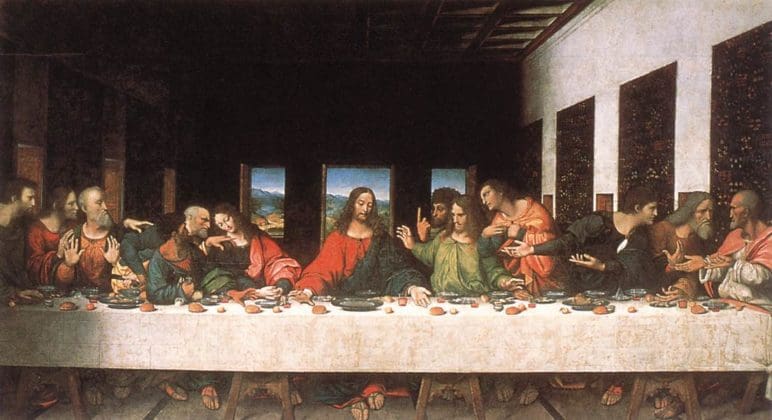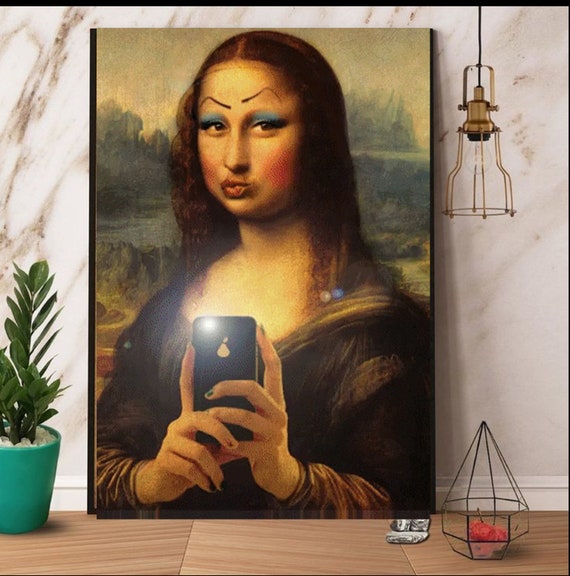
Posted on 07/29/2024 5:43:06 AM PDT by Red Badger

The Last Supper — Leonardo Da Vinci — Photo by: (www.wikipedia.org)
================================================================================
The Last Supper (Il cenacolo) is the famous fresco that Leonardo da Vinci painted between 1495 and 1497. If you go to Milan, you will surely go to the Dominican convent of Santa Maria delle Grazie to see and enjoy this magnificent work.
I want to share with you and investigate the way in which Leonardo chose the models for his works and explain the curious story of Jesus and Judas from da Vinci’s Last Supper.
Leonardo took quite a long while to pick the models for his Last Supper.
Numerous contemporary painters of his rehashed the figures starting with one work then onto the next in the event that they had been effective with them. The models were similar regardless of who they spoke to, yet Leonardo had another method of working.
He would consider the nature and presence of the figure he needed to speak to, and afterward, when he comprehended what he needed, he would head off to someplace where he would probably discover individuals with those qualities.
He took notes of their faces, developments, and mentalities, and wouldn’t surrender until he found the model that fit what he had as a primary concern.
In the case of the Last Supper, he chose his models with special care. Legend has it that for Jesus Christ, Leonardo found a young man who was exactly what he was looking for. The chosen one transmitted both life and spiritual strength. For 6 months he posed as a model for him.
Time passed and in spite of the fact that the work was essentially completed, the Prior of Santa Maria delle Grazie became anxious and even grumbled to the Duke, Ludovico Sforza, who had dispatched the fresco for the community’s refectory, that Judas actually had no face.
As per Vasari, Leonardo answered that he had not yet discovered a model that considered conspiracy and degeneracy his face, yet that if the earlier demanded the issue, Judas’ face would be his.
The legend proceeds by clarifying that, at last, Leonardo went to prison, to where those condemned to death were, to check whether he could locate his model.

Bartholomew, James, son of Alphaeus, and Andrew form a group of three; all are surprised. | Judas Iscariot, Peter, and John form another group of three. — Photo by: (https://commons.wikimedia.org)
========================================================================================
There he saw a man who had carried out numerous outrages and who was going to be executed. It was actually what he was searching for, his face reflected malevolence, contempt, and villainy, he had in his eyes a hardness and frigidity ideal for Judas the trickster.
He approached the Duke for authorization to paint it and his execution was deferred to fill in as a model for the ace.
At the point when they completed the model, he went to Leonardo inquiring as to whether he didn’t remember it, he answered that he didn’t think he had seen it previously.
The man admitted that it was a similar man who had modeled for the figure of Jesus. Crying, he deplored the float that had ended his life and shouted: “How low I have fallen, yesterday I was Jesus and today I am Judas!”
Possibly this curious story is nothing more than a legend, but it is true that Leonardo chose his models with special care and wanted their faces to be the expression of their souls.
PinGGG!..........................
Why are they all sitting on the same side of the table like a movie would have it ?
That’s the common depiction of the Renaissance.
In reality, they would have been reclining around a long table/platform about a foot tall, and no chairs...................
“Why are they all sitting on the same side of the table like a movie would have it ?”
Because one of them said, “Everyone who wants in the picture, get on this side of the table”...?
Last Supper by Domenico Ghirlandaio, 1480, depicting Judas separately
Tintoretto, Last Supper, 1592–94, showing the Communion of the Apostles

Giorgio Vasari (Arezzo 1511 - Florence 1574)
Jacopo Bassano, The Last Supper, 1542
Remember that this is a painting, not a photograph. It is an interpretation by the artist. Most likely there was no table involved at all, since at that time people were reclining while dining.
Jacopo Bassano, The Last Supper, 1542

Dirk Bouts, The Last Supper, 1465
Every one of the participants in that banality was a Judas.

“Remember that this is a painting, not a photograph.”
Well duh. And here I thought the waitress snapped the shot with her Brownie.
The cat?!
Many thanks for the several awesome artists’ interpretations of The Last Supper.

Apparently all the apostles and Jesus had ‘Morton’s Toe’.
The condition where the second toe is longer than the big toe is called Morton’s Toe. Morton’s Toe occurs when the second metatarsal bone is longer than the first metatarsal bone, resulting in the appearance of the second toe being longer than the big toe. This condition is a type of brachymetatarsia, caused by a premature closing of the first metatarsal’s growth plate.
He’s the one without a halo. Cats were seen at that time as nefarious creatures and that is why the cat is pictured with Judas, like a witch and its familiar................
Disclaimer: Opinions posted on Free Republic are those of the individual posters and do not necessarily represent the opinion of Free Republic or its management. All materials posted herein are protected by copyright law and the exemption for fair use of copyrighted works.